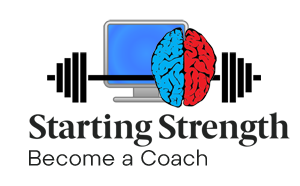
Originally Posted by
GiannisKa

Hello everyone. Before letting you know about my injury, I need to give you some information about my body. In 2015 (15 years old at the time – not ever been to the gym), I had been experiencing for some time a lot of numbness in my feet, especially under the arch. So, I went to a PT who told me that my feet were too tense and tried for 1 month to loosen them, but it didn’t solve the problem. The next thing I tried was a neurologist, who examined me and told me that everything was ok. Lastly, I went to and orthopedic-sports medicine, who told me to get an MRI. I did as he said, I went back and he told me that I had some small disk herniations ( that was basically the cause of feet numbness, he said ). Because that’s all he said, I’m going to tell you what the paper of the MRI says. It is in Greek, so I’ll do my best to translate:
1) Presence of small Schmorl’s nodes in all intervertebral disk spaces except from L5-S1.
2) T10 - T11 : Mild, mostly paracentral to the right annular bulging causes mild pressure on the spinal sac.
3) T11 - T12 : Mild, mostly paracentral annular bulging causes mild pressure on the spinal sac.
4) L2 – L3 : Widening of the annulus fibrosus, coming in contact with the Dural sac.
5) L3 – L4 and L4 – L5 : dispersed disc bulge causes mild pressure on the spinal sac.
No other significant findings from the other intervertebral disc spaces.
No clear image of disc herniation.
Normal range of the spinal canal.
Normal signal strength appears on the last part of the spinal cord and on the roοts of the cauda equina.
Normal signal strength appears on the lumbar verterbrae.
Now about the injury. 9 days ago I went to the gym ( I’ve been going for over a year, emphasizing on the compound lifts ). While I was doing military presses, on the last rep I hyperextended my back a lot and I felt a sudden pain on my low back. I stopped, did some back extensions, stretched, foam – roalled my back and went home. Next day, I felt pain when hyperextending by back ( It was and it is a tightness-like pain, not muscular I think ) and, because of fear, I didn’t train for 4 or 5 days I think. When I eventually went to train, I did squats cause I didn’t feel anything when my spine was in neutral position ( still I don’t ), bench press, barbell rows and back extensions ( maybe the last 2 were a bad decision considering my situation ). The following day, the pain got a little worse, still when hyperextending. Also, I found that when I bend forward I feel also a little discomfort. Since then, I could say that the situation hasn’t got any better. So, after a lot of research, I got really interested about the work of Mark Rippetoe, so I decided to reach his page for help.
Any advice would be appreciated !
Thank you !








 Reply With Quote
Reply With Quote

